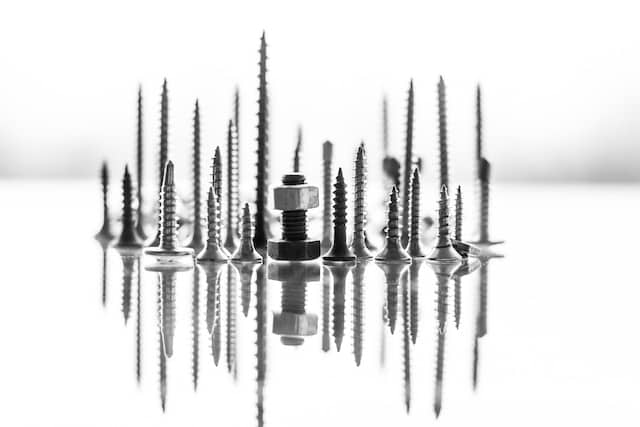Mastering the Art of Secure Fixtures: A Guide to Screws and Installation in Bathrooms
Introduction:
Choosing the right screws for bathroom fittings and accessories is crucial to ensure stability and longevity in a space exposed to moisture and humidity. Additionally, safely drilling into tiles and PVC panels requires precision and the right tools. In this guide, we’ll explore different types of screws, their applications, and provide insights into selecting the appropriate screws for bathroom fixtures while offering tips on drilling into tiles and PVC panels.
Types of Screws:
- Wood Screws:
- Designed for use in wood and wooden fixtures.
- Ideal for attaching wooden bathroom accessories or fixtures to wooden studs or surfaces.
- Drywall Screws:
- Intended for use in drywall or plasterboard.
- Feature fine threads to grip the drywall more effectively, providing a secure hold.
- Masonry Screws:
- Suited for attaching fixtures to concrete or brick walls.
- Equipped with a hardened steel body for drilling into tough surfaces.
- Sheet Metal Screws:
- Designed for use in thin metal sheets.
- Commonly used for securing metal fixtures or accessories in bathrooms.
- Self-Tapping Screws:
- Contain a sharp point for drilling their own holes.
- Suitable for a variety of materials, including metal and plastic.
Selecting Screws for Bathroom Fittings:
- Rust-Resistant Materials:
- Opt for screws made from materials like stainless steel or brass to resist corrosion in the humid bathroom environment.
- Water-Resistant Coatings:
- Choose screws with coatings, such as zinc or galvanized finishes, for added protection against moisture.
- Consider Material Compatibility:
- Ensure the screws are suitable for the materials involved. For instance, use masonry screws for fixtures on tiled or concrete walls.
- Length Matters:
- Select screws with an appropriate length, considering the thickness of the material you are fixing. Oversized screws can compromise the structure.
Safely Drilling into Tiles:
- Use the Right Drill Bit:
- Invest in a high-quality carbide-tipped drill bit designed specifically for drilling into tiles. This prevents cracking and ensures a clean hole.
- Mark and Mask:
- Mark the drilling points on the tile using a pencil. Apply masking tape over the area to prevent the drill bit from slipping.
- Low Speed and Steady Pressure:
- Set your drill to a low speed to prevent overheating. Apply steady, even pressure while drilling to avoid chipping.
- Cooling Techniques:
- Periodically dip the drill bit in water or use a spray bottle to cool it down during the drilling process.
Safely Drilling into PVC Panels:
- Pilot Holes:
- Start by creating a pilot hole using a drill bit slightly smaller than the screw size. This helps guide the screw and prevents cracking.
- Low Speed:
- Use a low-speed setting on the drill to avoid melting the PVC material due to friction.
- Backer Board Support:
- Place a piece of scrap wood or a backer board behind the PVC panel to provide support and prevent blowouts.
- Choose the Right Screws:
- Opt for self-tapping screws designed for use with plastic materials for a secure and lasting attachment.
Conclusion:
Choosing the right screws and employing proper drilling techniques are essential steps in ensuring secure and durable bathroom fixtures. Whether it’s attaching accessories to tiles or PVC panels, understanding the characteristics of different screws and materials is crucial for a successful installation. By following these guidelines, homeowners can achieve not only a visually appealing bathroom but also a safe and long-lasting space that withstands the challenges of a humid environment.
Need help with bathroom accessories and fittings, please get in touch with us bathroom renovators Manchester
